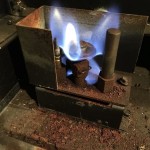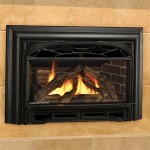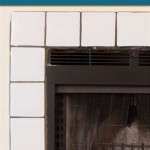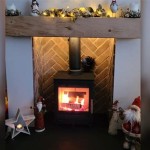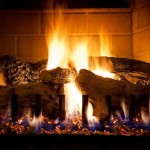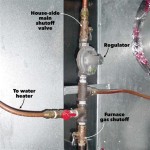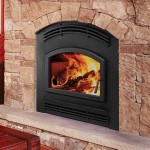Rockwool for Gas Fireplaces: A Comprehensive Guide
Gas fireplaces are a popular and efficient way to heat a home and create a cozy atmosphere. However, proper insulation is crucial for optimal performance, safety, and energy efficiency. Rockwool, a type of mineral wool insulation, is a highly effective and versatile material often used in gas fireplace installations. This comprehensive guide will delve into the benefits of using Rockwool for gas fireplaces, its key applications, and installation considerations.
Benefits of Using Rockwool in Gas Fireplaces
Rockwool offers numerous advantages over traditional insulation materials, making it a preferred choice for gas fireplace applications. Here are some key benefits:
1. Excellent Thermal Insulation
Rockwool's unique fiber structure creates countless air pockets that trap heat effectively. This exceptional thermal insulation prevents heat loss from the fireplace, ensuring it efficiently warms your home. It also helps prevent overheating of surrounding surfaces, improving safety and longevity.
2. Fire Resistance and Safety
Rockwool is inherently non-combustible and can withstand high temperatures without igniting. This fire-resistant property makes it an ideal material for fireplace applications, providing a crucial safety barrier against potential fire hazards.
3. Sound Absorption
Apart from thermal insulation, Rockwool also excels in sound absorption. It effectively dampens noise from the fireplace operation, creating a quieter and more enjoyable experience. This is particularly beneficial for homes with open floor plans or where the fireplace is located near a living area.
4. Moisture Resistance
Rockwool is naturally resistant to moisture, minimizing the risk of mold and mildew growth. This property is essential in fireplace installations, as these areas are often exposed to humidity and condensation.
Applications of Rockwool in Gas Fireplaces
Rockwool plays a vital role in various aspects of gas fireplace installation and maintenance. Here are some key applications:
1. Insulation Around the Firebox
A layer of Rockwool insulation is typically installed around the firebox to prevent heat loss from the fireplace. This ensures optimal heat transfer to the room and reduces energy consumption. It also helps prevent overheating of surrounding materials, reducing the risk of fire hazards.
2. Insulation Behind the Firebox
Insulating behind the firebox with Rockwool prevents heat transfer to the wall, protecting the structure and potentially flammable materials. This is particularly important in older homes where walls may contain combustible materials.
3. Sound Dampening
Rockwool's sound absorption properties can be used to minimize noise from the fireplace operation. It is often used to line the fireplace enclosure or create a sound-dampening barrier around the firebox.
4. Protecting Air Ducts and Vents
Rockwool is a safe and effective material for insulating air ducts and vents near the fireplace. This prevents heat loss from the ducts and ensures efficient air circulation within the room.
Installation Considerations
When installing Rockwool around the firebox or in other areas of the fireplace, it is crucial to follow proper procedures to maximize effectiveness and ensure safety. Here are some key considerations:
1. Fire Codes and Regulations
Always comply with local building codes and fire regulations regarding the installation of insulation around fireplaces. Ensure the Rockwool installation meets the required safety standards.
2. Professional Installation
For optimal installation and safety, consider hiring a qualified and experienced professional. They have the necessary expertise and tools to properly install Rockwool according to building codes and manufacturer guidelines.
3. Proper Ventilation
Ensure adequate ventilation around the fireplace to allow for proper airflow and prevent heat buildup. This is crucial for safety and efficient fireplace operation.
4. Manufacturer Guidelines
Always refer to the manufacturer's guidelines for specific installation instructions and best practices. This will ensure proper installation and maximize the benefits of using Rockwool in your fireplace.
In conclusion, Rockwool offers numerous advantages for gas fireplace installations, from excellent thermal insulation and fire resistance to sound absorption and moisture resistance. By understanding its key benefits and applications, you can ensure a safe, efficient, and enjoyable gas fireplace experience for your home. Always prioritize proper installation and adhere to relevant building codes and fire safety regulations to ensure a successful project.

How Ember Wool Can Enhance The Look Of Your Fireplace

Glowing Embers For Fireplace Mother Daughter Projects

Glowing Embers For Fireplace Mother Daughter Projects

Rock Wool Glowing Embers For Vented Gas Log Sets Inserts And Fireplaces 6 Oz Ba

Barton 6 Oz Rock Wool Glowing Embers For Gas Fireplace Logs With Vermiculite Granules 95055 H The Home Depot

Glowing Embers For Fireplace Mother Daughter Projects

Regal Flame Bright Rock Wool Gas Fireplace Glowing Embers For Logs

Glowing Embers In A Fireplace Magic Touch Mechanical

Vermiculite Granules For Gas Logs Coarse Fireplace

Barton 6 Oz Rock Wool Glowing Embers For Gas Fireplace Logs With Vermiculite Granules 95055 H The Home Depot
Related Posts

